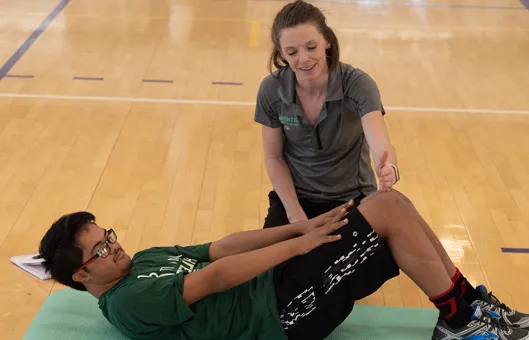Ab Exercises
Single Leg Stand
- Target Body Part:
- Abs
- Equipment:
- No Equipment
- Difficulty:
-
 Beginner
Beginner
Step 1
Starting Position: Stand with both feet together or spread a few inches apart (2-3"), but parallel with each other. Depress and retract your scapulae (pull your shoulders down and back) while simultaneously engaging (contracting) your abdominal muscles to avoid any excessive arching in your low back. Bend your knees slightly and keep your abductors and adductors under tension (contract your inner and outer thigh muscles). This will help control against excessive hip adduction (sideways shift) during the single-leg stand.
Step 2
Movement: Slowly lift one leg 3-6" off the floor, stabilizing your body on the stance (supporting) leg. Avoid any sideways tilting or swaying in your upper body and try not to move the stance (supporting) foot. Hold for 10-15 seconds before returning the raised foot to the floor. Perform an equal number of repetitions with each foot.
Step 3
Exercise Variation: Increase the intensity of this exercise by going through the following progressions (1) lift the one leg higher off the floor (illustrated) to further raise your center of mass, (2)raise both arms overhead (3) lift one arm to your side, (4) tilt your head, (5) close your eyes then finally (6) close your eyes and tilt your head.
Most of us can lift one leg, but the question of the quality of movement is important. Perform your movements slowly and under control, avoiding any sudden positional changes. Perform each progression until you can execute them with good control and form.
Share:

Inclusive Fitness Training
Create fitness opportunities for people with intellectual disabilities!
Learn MoreCourse!
